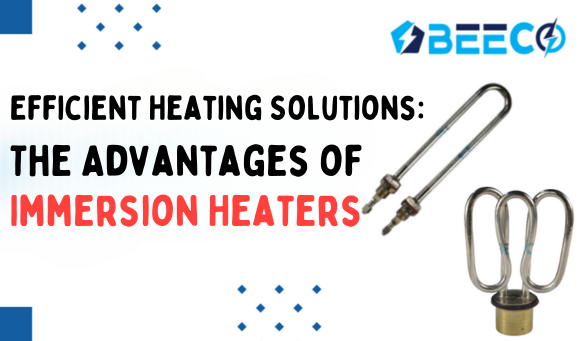A Differential Guide between Immersion Heaters And Hot Water Tanks
If you are looking for a way to heat water in your home, you may have come across two different...

Heating is an essential process in many industrial and commercial applications, such as chemical processing, water heating, oil heating, food processing, and more. However, not all heating solutions are equally efficient, reliable, and cost-effective. One of the most popular and versatile heating solutions is the immersion heater, which is a type of electric heating element that is immersed directly in the material to be heated, such as liquid, gas, solid, or surface. Immersion heaters offer many advantages over other heating solutions, such as high heat transfer rate, low maintenance, easy installation, and long lifespan. In this blog, we will explore the basic information, working principle, types, and benefits of immersion heaters, and how Beeco Electronics can help you find the best immersion heater for your needs.
An immersion heater is a heating element that consists of a metal tube, usually made of stainless steel, incoloy, inconel, or copper-nickel alloy, that contains a coiled wire, usually made of nickel-chromium alloy, that generates heat when electric current passes through it. The metal tube is sealed at one end and has a screw plug or a flange at the other end, which allows the immersion heater to be mounted to the side or the bottom of a tank or a vessel. The immersion heater also has a terminal enclosure that protects the electrical connections from moisture, dust, and other contaminants.
An immersion heater works by transferring the heat generated by the electric resistance of the coiled wire to the material surrounding the metal tube. The heat transfer can occur by conduction, convection, or radiation, depending on the type and state of the material. For example, when an immersion heater is used to heat a liquid, such as water or oil, the heat transfer occurs by convection, as the heated liquid rises and the cooler liquid sinks, creating a natural circulation that distributes the heat evenly. When an immersion heater is used to heat a gas, such as air or steam, the heat transfer occurs by radiation, as the heated gas emits infrared rays that heat the surrounding surfaces. When an immersion heater is used to heat a solid or a surface, such as a mold, a die, or a platen, the heat transfer occurs by conduction, as the heat flows from the hotter metal tube to the cooler solid or surface.
There are many types of immersion heaters, depending on the shape, size, material, and configuration of the metal tube and the coiled wire. Some of the common types of immersion heaters are:
Immersion heaters offer many benefits over other heating solutions, such as:
Beeco Electronics is a leading manufacturer and supplier of immersion heaters and other electric heating elements in India, using Swiss technology and state-of-the-art manufacturing plants. we offers a wide range of immersion heaters, such as finned, straight, U-shaped, M-shaped, and custom-made immersion heaters, for various applications and industries.
We has a team of qualified and experienced engineers and technicians, who can help you design, calculate, and select the best immersion heater for your needs. Also provides installation, maintenance, and after-sales service, to ensure your satisfaction and peace of mind.
Beeco Electronics is committed to delivering quality, innovation, and customer satisfaction. Contact Beeco Electronics today and get a quote for your immersion heater project.
If you are looking for a way to heat water in your home, you may have come across two different...
An immersion heater is an electric device that heats water in a tank or cylinder by using a heating element...
Immersion heaters are devices that use electric resistance heating elements to heat liquids, gases, or solids in tanks, vessels, or...
